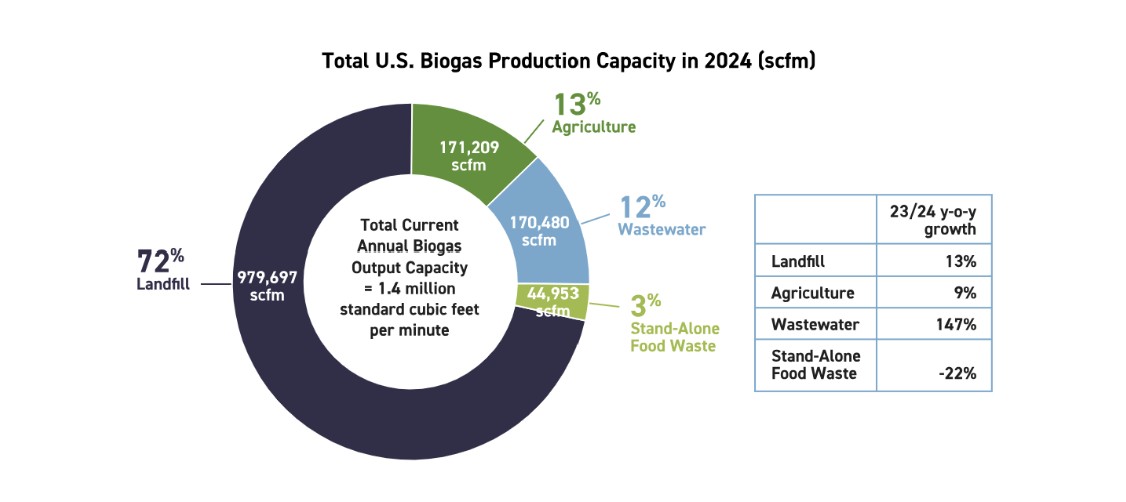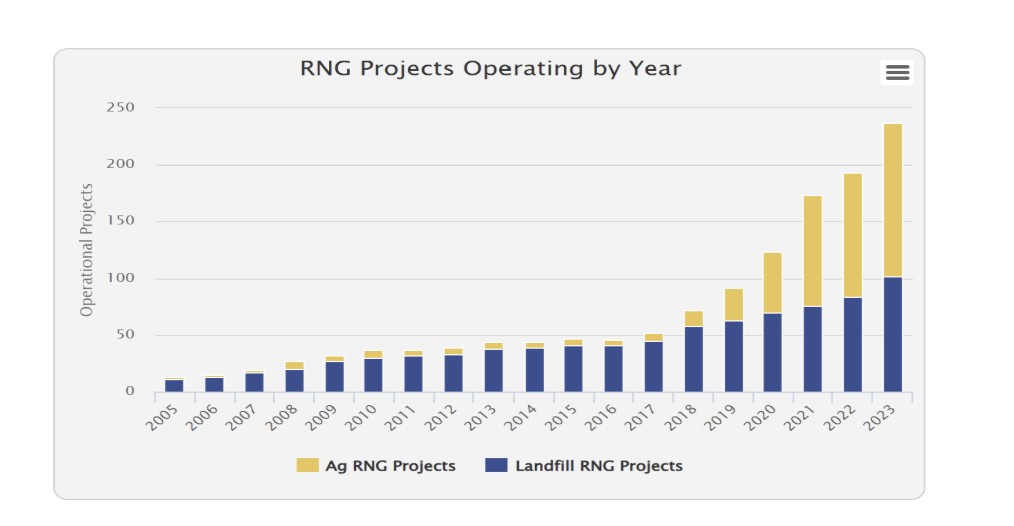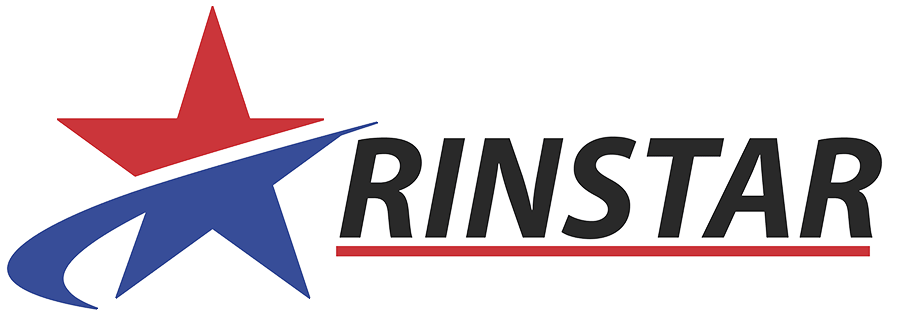What used to be seen as messy environmental problems—like landfills, farms, and wastewater treatment plants—are now getting a second chance. These places are becoming powerful players in the clean energy space, thanks to Renewable Natural Gas (RNG). By capturing greenhouse gases and turning them into a clean, pipeline-ready fuel, RNG is helping cut transportation emissions and opening up exciting economic opportunities. And the momentum is real—RNG projects are popping up all over the country, transforming waste into a valuable part of America’s renewable energy future.
What is Renewable Natural Gas?
Renewable Natural Gas (RNG), also known as biomethane, is a clean, pipeline-quality fuel made from biogas—a natural byproduct of organic materials breaking down without oxygen. This raw biogas primarily contains methane (the same main ingredient found in fossil natural gas), along with carbon dioxide and other trace impurities.
To turn biogas into RNG, it goes through an “upgrading” process where unwanted components like CO₂, water vapor, and hydrogen sulfide are removed. This boosts the methane content to 90% or higher, resulting in a fuel that is a drop in replacement to conventional natural gas. RNG can be used in the same pipelines, appliances, and natural gas vehicles—but with one important distinction: it’s produced from renewable, organic sources instead of fossil fuels.
The Sources
The feedstocks for RNG are abundant and diverse, primarily sourced from three major categories of organic waste:
- Municipal Solid Waste Landfills:
As organic materials like food scraps and yard trimmings decompose in landfills, they naturally produce landfill gas (LFG), which is roughly 50% methane.
Landfills are the third-largest source of human-related methane emissions in the U.S.
Landfills have the largest RNG production potential and currently account for the majority of operational projects and output capacity. - Anaerobic Digesters:
These systems are essentially sealed, oxygen-free environments where microorganisms break down organic matter in a controlled process to produce biogas.
Major feedstocks for digesters include:- Agricultural Waste:
Manure from livestock operations like dairy and hog farms is a major source. On-farm digesters not only produce energy but also offer a sustainable solution for manure management. - Wastewater Treatment Plants (WWTPs):
The sewage sludge and biosolids processed at these facilities can be anaerobically digested to produce biogas, turning a costly disposal problem into a revenue source. - Food Waste:
Organic waste from food and beverage manufacturers or separated municipal solid waste can be processed in standalone digesters or co-digested with other feedstocks like manure to boost biogas production.
- Agricultural Waste:

Monetizing Methane
The transformation of waste into a valuable commodity is made possible by powerful policy incentives. When RNG is used as a transportation fuel, in the form of compressed natural gas (CNG) or liquefied natural gas (LNG), it generates RINs.
The type of RIN generated depends on the feedstock, which determines the fuel’s lifecycle greenhouse gas (GHG) reduction score:
- D3 Cellulosic Biofuel RINs: These are the most valuable RINs due to high GHG reduction requirements (60%) and limited supply. RNG produced from landfill biogas, agricultural manure digesters, and wastewater treatment plants qualifies for D3 RINs.
- D5 Advanced Biofuel RINs: These RINs are generated from other waste-derived biogases, such as from food waste digesters, and require a 50% GHG reduction.
The revenue from selling these RINs, combined with the sale of the gas itself, can make RNG projects highly profitable, with payback periods often under three years.
A Sector in High Growth
Driven by these powerful incentives, the number of operational RNG projects has skyrocketed. EPA data shows that from 2018 to 2023, the number of landfill-based RNG projects nearly doubled from 58 to 102, while agricultural projects exploded from just 14 to 135. As of June 2024, there were 191 manure-based RNG systems in operation with another 69 under construction.
While digesters at farms and WWTPs are growing fastest, landfills remain the dominant source of production capacity, accounting for 67% of the total annual RNG output in 2024.

Beyond the RFS
While the RFS sets a solid national foundation, state-level programs have taken things a step further—often offering even greater financial incentives. California’s Low Carbon Fuel Standard (LCFS) has been a game-changer, awarding credits based on a fuel’s carbon intensity score. RNG produced from sources like dairy manure, which actually helps remove methane from the atmosphere, can earn exceptionally high LCFS credit values—sometimes more than 15 times the price of fossil natural gas. This strong market signal has driven a surge in project development and investment, especially in states rich in RNG potential. Following California’s lead, states like Oregon, Washington, and New Mexico are now rolling out their own clean fuel standards, expanding opportunities across the country.
The Future is Renewable
Turning waste from landfills and digesters into RNG is a great example of the circular economy in action. It takes what was once a major source of pollution and transforms it into a clean, homegrown energy solution that strengthens our fuel supply, creates jobs, and boosts rural communities. While there are still hurdles to overcome, the combination of plentiful waste resources and supportive policies like the RFS has created a strong foundation for growth. As long as these programs continue to recognize and reward the environmental benefits of methane capture and use, RNG is well-positioned to play an increasingly important role in America’s clean energy future.
How RINSTAR Can Support Your RNG Journey
With over 15 years of experience in Renewable Fuel Standard (RFS) compliance, RINSTAR has helped clients navigate changing regulations, market shifts, and policy developments—especially in emerging areas like Renewable Natural Gas (RNG). Our platform simplifies RIN tracking, inventory management, and regulatory reporting, so you can focus on growing your project with confidence.
👉Discover how RINSTAR streamlines compliance for RNG producers and separators
Stay Informed and Stay Ahead
As clean fuel programs expand and RNG continues to gain traction, staying informed is more important than ever. Subscribe to our newsletter and follow our blog for updates on:
- RFS and state-level policy changes
- RNG project trends and best practices
- New fuel pathways and credit opportunities
- Key developments in carbon intensity scoring and compliance
Have Questions? We’re Here to Help
Whether you’re launching a new RNG project or adjusting to new regulatory frameworks, our team is here to support you.
Reach out to us at services@cfch.com or schedule a personalized RINSTAR demo to see how we can help streamline your compliance journey
